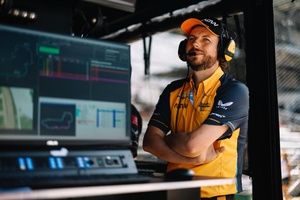
Behind the wheel of rallycross's electric future
Autosport was let loose in the all-electric STARD-built Projekt E racer in Austria and the findings were highly impressive

Engineering
Our experts' guide on how you can become a better racing driver
Before I climb into what Manfred Stohl describes as the best car to ever leave his STARD team's workshop, the former Production World Rally champion explains the sensation of launching his creation towards Turn 1 as akin to a tensioned elastic band being released.
As I'm about to discover, he's not wrong.
Plenty has happened since Autosport last visited the Greinbach circuit in Austria more than two years ago to sample STARD's electric rallycross Supercar prototype.
Share Or Save This Story
Subscribe and access Autosport.com with your ad-blocker.
From Formula 1 to MotoGP we report straight from the paddock because we love our sport, just like you. In order to keep delivering our expert journalism, our website uses advertising. Still, we want to give you the opportunity to enjoy an ad-free and tracker-free website and to continue using your adblocker.

















